
The Ultimate Bucket List for Avid Travel Photographers
10 May 2019
With so many cool features on our smartphones these days, taking photos on a holiday comes naturally for just about anyone. That being said, some of the most beautiful photos taken across the globe are a result of very careful planning, wise choice of location, and a good eye for composition. Of course, having the right camera equipment helps too.
If you’re an avid travel photographer who wants to venture beyond the familiar, this planet is full of amazing places that will inspire you. For starters, here are ten destinations where you can capture the earth’s natural beauty through landscape photography.
Beautiful Sunsets in Oia, Greece
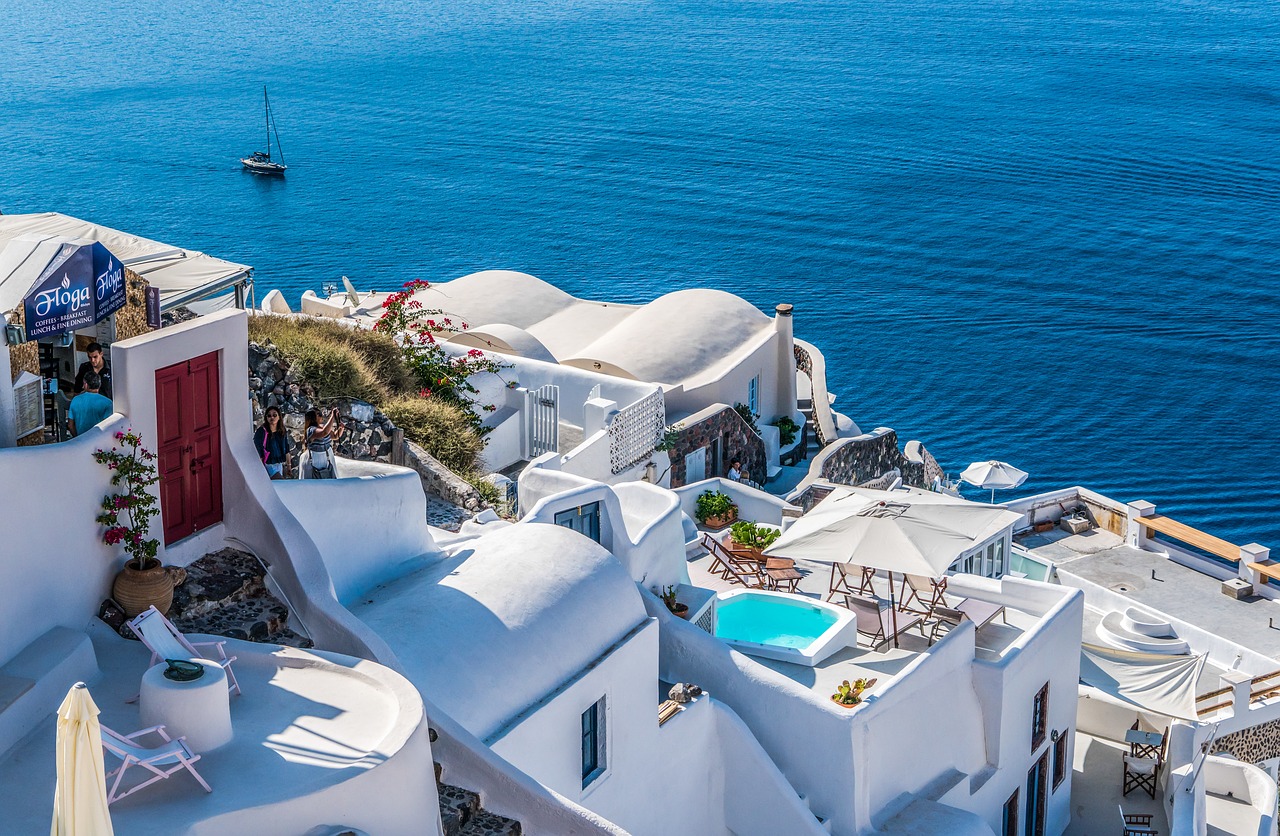
Image by Michelle Maria from Pixabay
The breathtaking view of Oia’s endless blue horizon and white and blue-domed buildings make this place beautiful any time of the day. However, the magic of dusk only really appears when the city lights up and the golden evening sun touches the surface of the ocean. Oia Castle is where most people capture this iconic shot from. You can also take equally stunning shots from cave hotels such as the Caldera Premium Villas in Oia. This is a unique hotel built into the rocks of a cliff with fantastic views from your own room. Another location for a pretty picture is at the Three Bells of Fira at Mama Thira’s house. Set your white balance to ‘cloudy’ or ‘shade’ for the sunset, and your aperture to f/16, ISO 100. The larger your aperture number is, the more of a starburst effect you’ll get from the sun. Use a tripod and a wide angle lens for best results.
Vast Rolling Greens of Tuscany, Italy

Image by Linda A. from Pixabay
The very mention of Tuscany is enough to make one salivate, just thinking of the produce of that land: wine, cheeses, and fresh olive oil. Considering how inspiring and beautiful the countryside is, it is no wonder the Renaissance began here. The best way to travel by renting a car and staying at an inexpensive farmstay, also known as an ‘agriturismo’ in Italian. Popular scenic locations include world heritage site Val d’Orcia and the hot springs at Cascate del Mulino, Saturnia. The best season to take photos is in summer where you get rolling green hills, and in springtime where flowers fill your frame with colour. To capture details, use a 70-200mm lens and wake up early to catch the first light of day.
Breathtaking Lake Views at Hallstatt, Austria
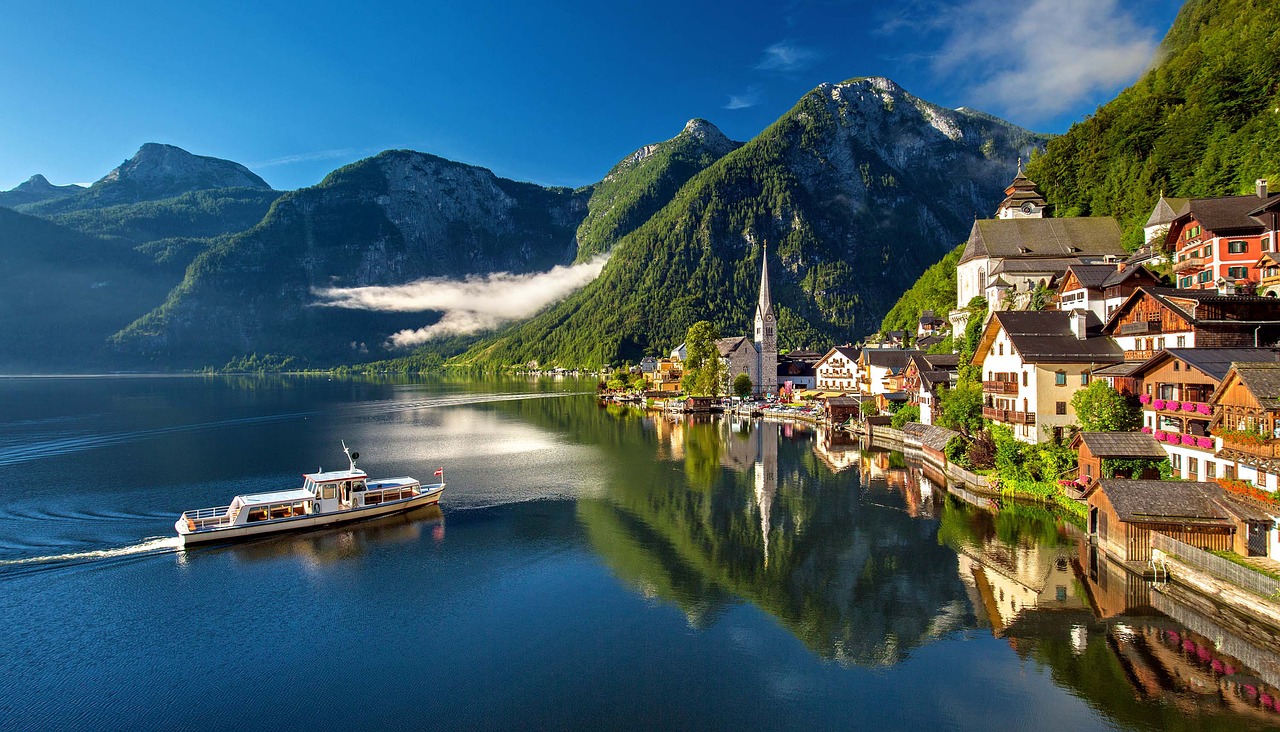
Image by Julius Silver from Pixabay
Many of us have had a glimpse of Austria from the famous American musical film, The Sound of Music (1965). I was reminded of how gorgeous it is when some friends sent photos taken from the Hallstatt "World Heritage View" Skywalk. Standing at 360 meters high and 12 meters out towards an incredible scenic view, this spot is definitely a go-to place for panoramic photos of Lake Hallstatt and the Dachstein mountain range. Photographers recommend visiting in late spring or summer for the best photos and to embrace foggy weather photos as it rains almost 15 days every month. The most famous spot for taking photos of the charming village and the lake is at Aussichtspunkt Hallstatt, also known as the Classic Village Viewpoint on Google Maps. Do note that parking is a little tough to find so most people travel by foot or bus in this region.
Whimsical Hot Air Balloons in Cappadocia, Turkey
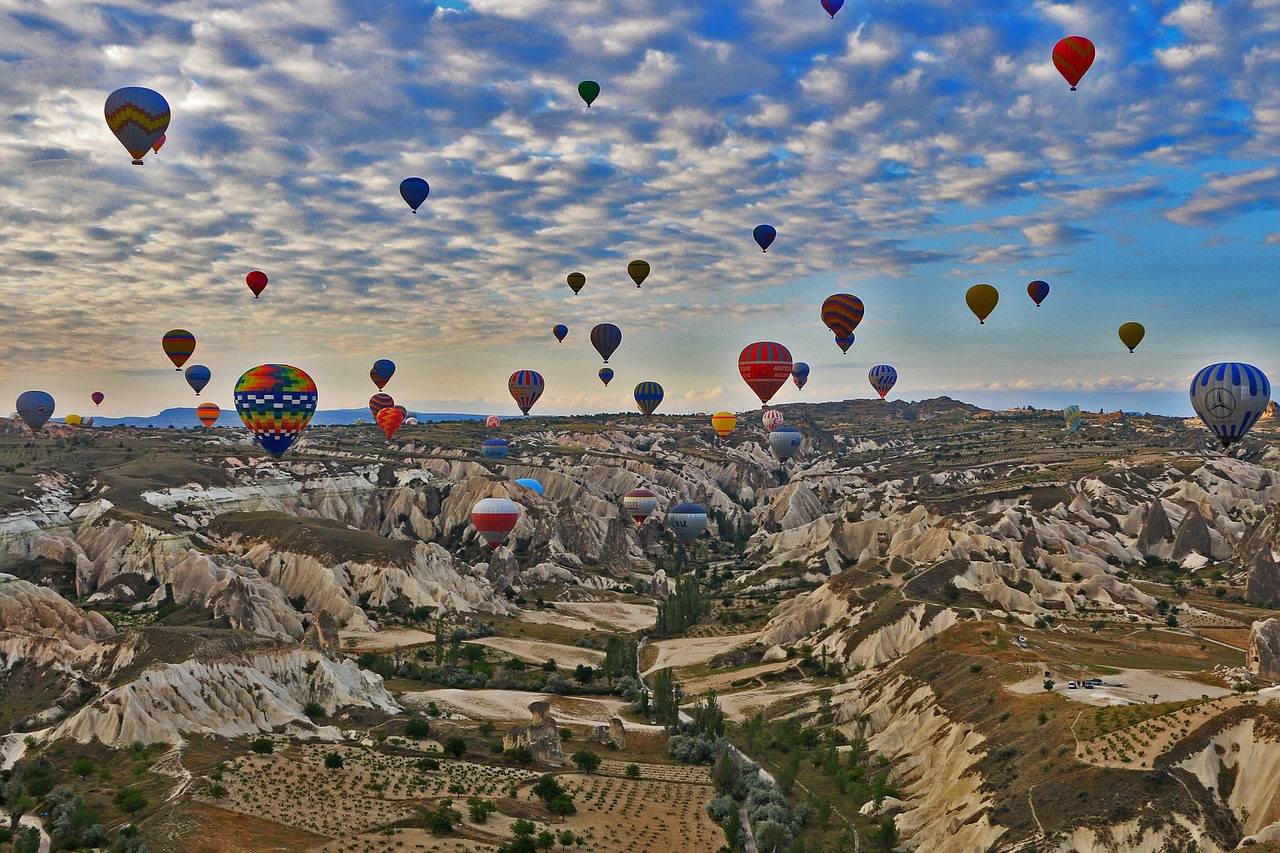
Image by Alfred Lichtenauer from Pixabay
Every morning, coloured hot air balloons slowly rise above Cappadocia’s rocky landscape towards the pale blue sky, creating a visual experience that looks like something from fantasy fiction. One of the best locations to get this shot is from the balcony of the Sultan Cave Suites (which is only open to paying hotel guests) or at the pool of the Museum Hotel, a hotel built from a thousand-year old cave. Another place that deserves mention are the Fairy Chimneys of Love Valley which is a popular eco-tourism spot as it has been carved by Mother Nature over millions of years.
Bedazzling Northern Lights of Lofoten, Norway
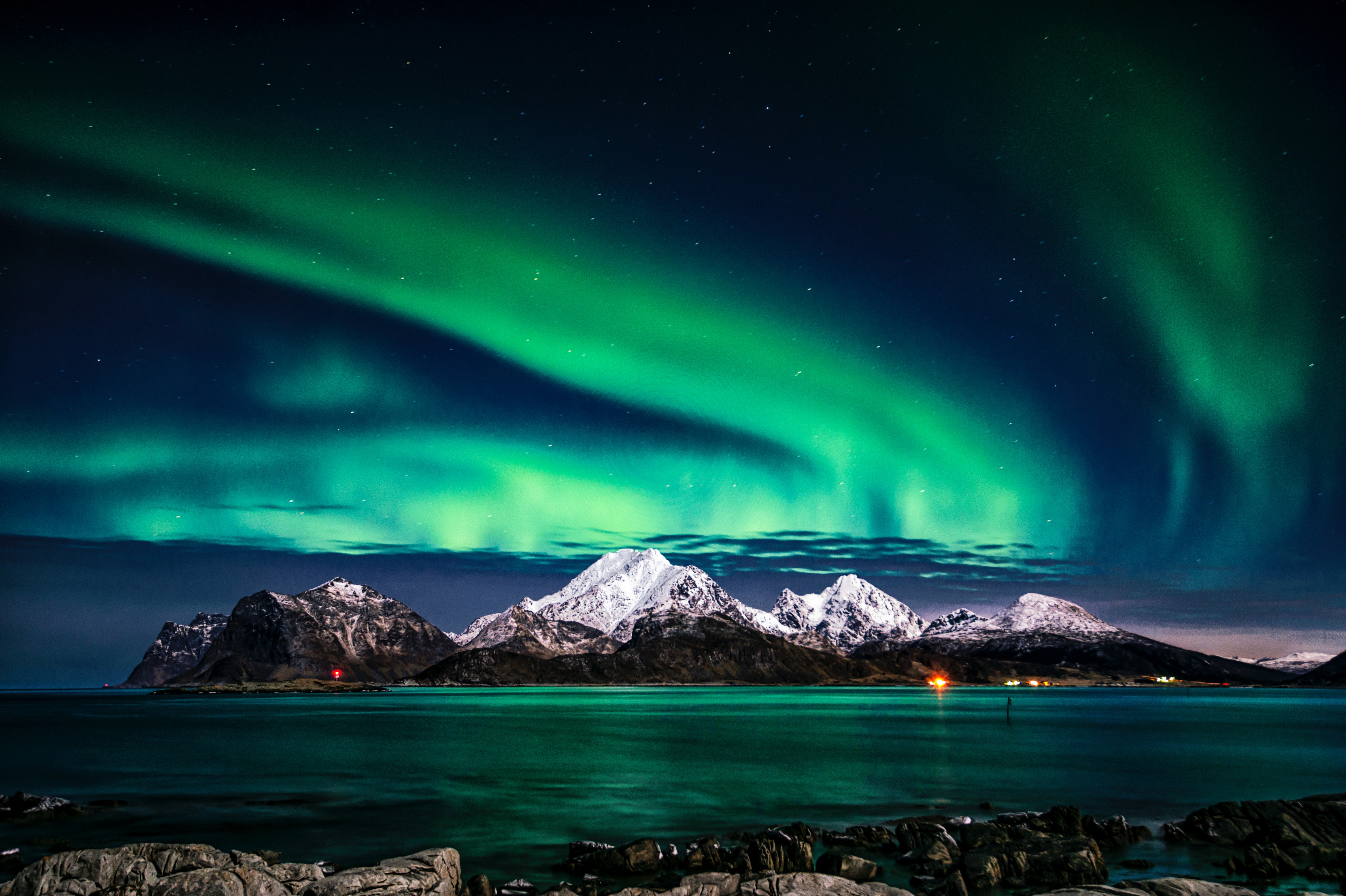
This is probably the trickiest photography challenge to pull off but so worth it. To capture this natural phenomenon, consider taking it at Lofoten. It’s an easily accessible place to view the Northern Lights during winter and has a fantastic landscape. Temperatures are unique here compared to other viewing locations, remaining above -5 Degrees Celsius while the rest of the region drops below -30 Degrees Celsius. Bring a tripod, a camera with manual mode functions, a wide angle lens, and make sure your aperture settings are between f/2.8-f/4. Set your lens to “infinity focus” and use the lowest possible ISO with a shutter speed of 5-7 seconds depending on how fast the lights are moving. Before your shoot, check on the aurora activity which is measured by a Kp-index of 0 to 9, with 9 being the highest and most visible.
A Galaxy Not Too Far Away over Lake Tekapo, New Zealand
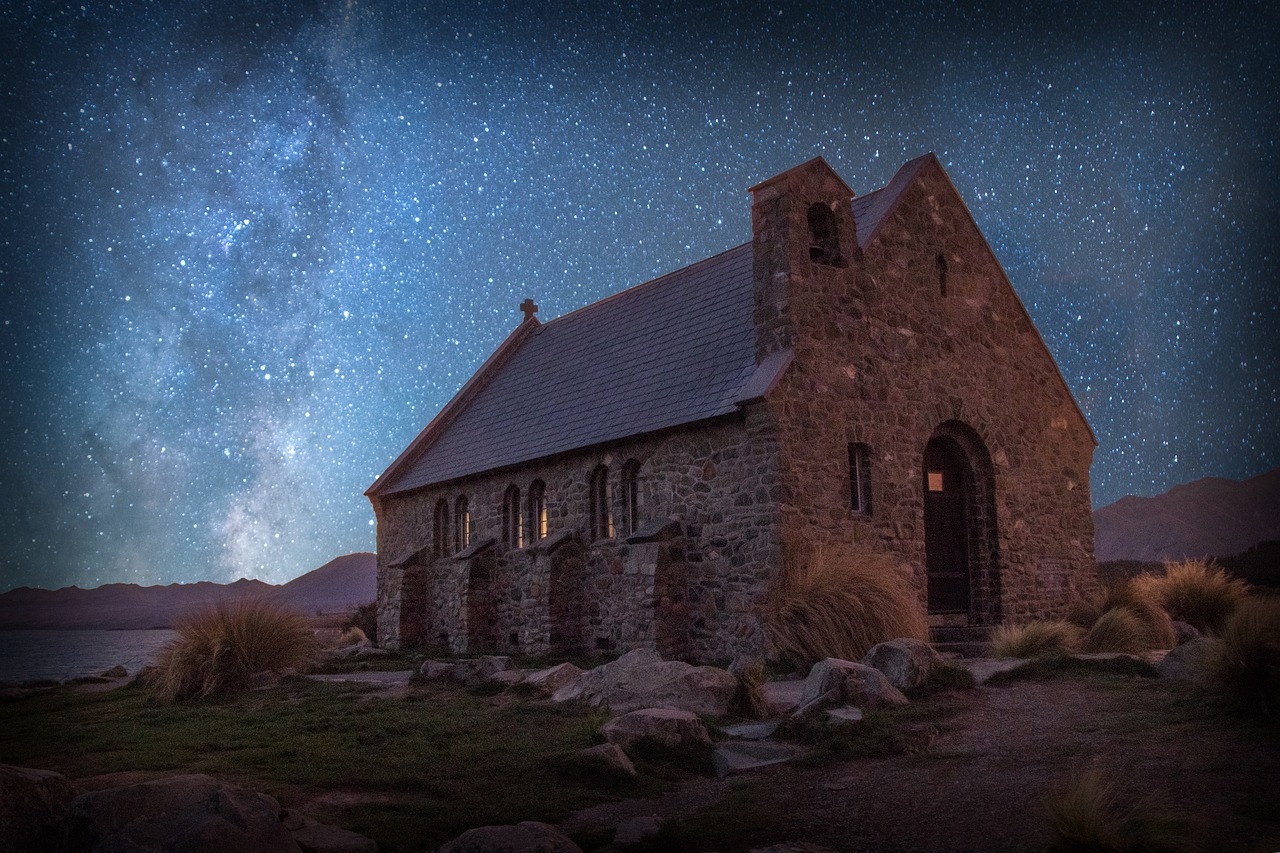
Image by Ira Gorelick from Pixabay
New Zealand has so much to offer when it comes to magnificent landscapes and its night sky view is otherworldly. It is one of the best places to photograph The Milky Way which is most visible between June to August, the coldest time of the year. So rug up and keep your camera protected from condensation with a sealable bag and a good camera bag. Lake Tekapo is a great place to capture The Milky Way, and there’s also a little church that makes a good foreground object in your photos if you like. You’ll also want to bring heat packs to warm your batteries and bring an extra set just in case. Use a lens with the smallest aperture number possible so that you can allow more light into the shot and a lower ISO to avoid grain. Try to keep the shutter speed below 20 seconds with your camera on a tripod, and focus on the brightest star before you take your shot.
Blazing Autumn Colours in Jiuzhaigou Valley, China

Image by shanghaistoneman from Pixabay
As a global superpower, China has some of the most impressive cityscapes equipped with the latest Ai technology to support its growing population and economy. Thankfully not all of China is developing at the speed of light, leaving nature’s untouched beauty for travellers to marvel in. One of these places is Jiuzhaigou national park. Located in the Sichuan province of China, it stretches over 72,000 hectares holding many multicoloured lakes and gorgeous waterfalls. Being a UNESCO World Heritage Site and also a World Biosphere Reserve, the park naturally attracts a daily crowd. Photography enthusiast Eric Soo advises to pack your own hot water and meals and be there at least an hour before sunrise to avoid bus loads of tourists and to get the best light possible. The park looks stunning every season but I’d say it shows off its full glory in autumn.
Refreshing Waterfalls in Bali, Indonesia
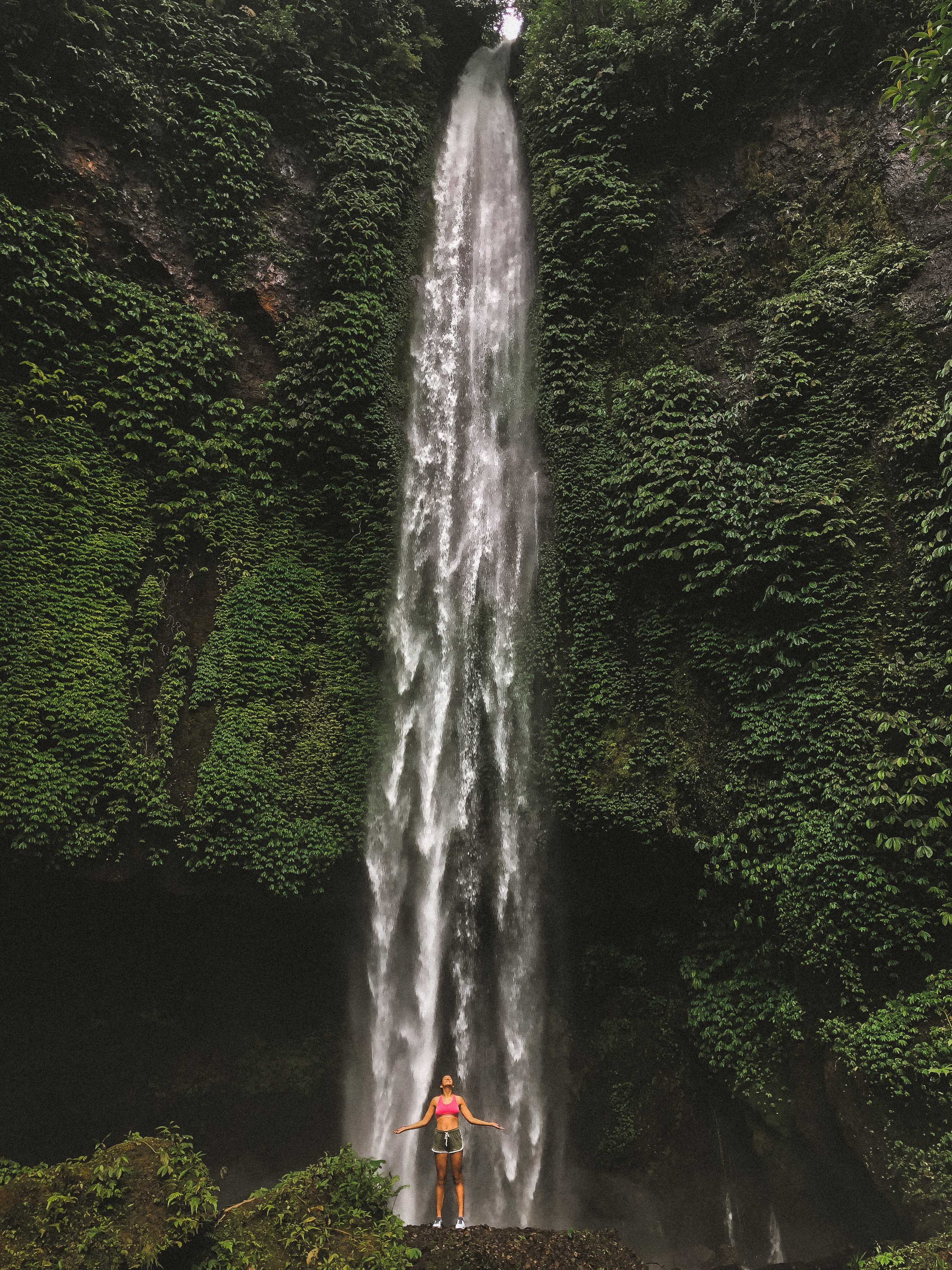
Bali is a treasure chest of some of the world’s most beautiful and clean waterfalls. This is where you’ll want to chase waterfalls because there are almost 60 falls located on this tiny island! Some of the more popular ones are Blemantung Waterfall, Golden Valley Waterfall, Banyu Wana Amertha Waterfall, Gigit Waterfall, and Aling-Aling. That last one has a hidden pool further in with a natural water slide that is five meters high. Bali is one of photographer Eric’s favourite places to photograph and he recommends bringing a cloth to wipe or cover your camera lens especially when taking long exposure shots for that silky falling water effect. You’ll also want to use a polarizing filter and angle your photos from the water or rock level for a majestic view of the falls. Above all, safety is a priority.
For any kind of travel photography, a good rule of thumb is to always shoot in RAW mode so you have more editing flexibility and always check on the weather and timing of sunrise or sunset wherever you are. You can also check the direction of sunlight on Google maps prior to your visit. It’s tempting to bring all the equipment you have “just in case” but you’ll need to travel light. So think carefully about what you need for the shots you want, and only bring those items. You will probably also be travelling with very expensive equipment. So our most important tip is to get your travels insured by Chubb Travel Insurance to ensure your safety, cover the cost of your valuables, and enjoy your travels with peace of mind.
----------